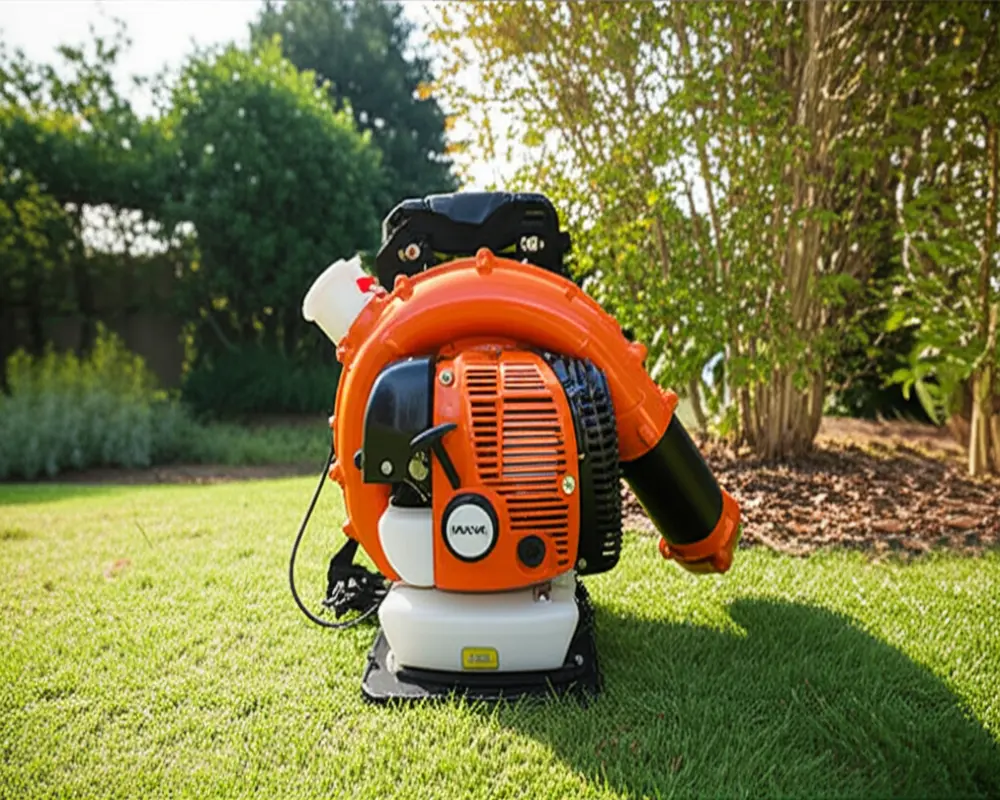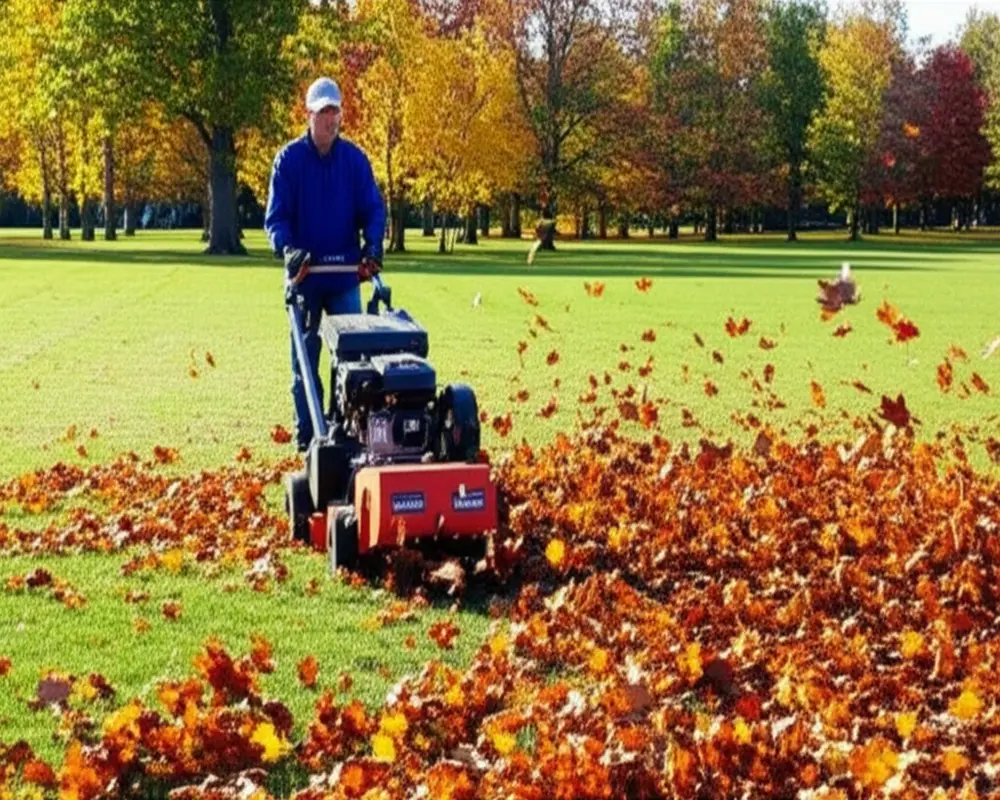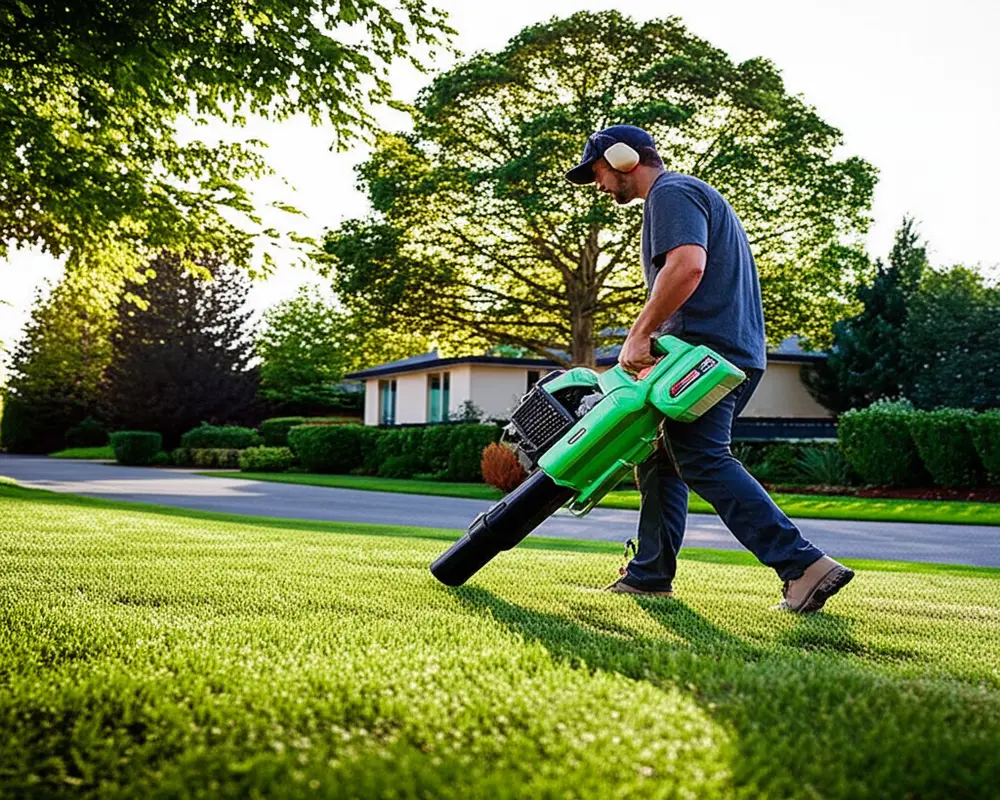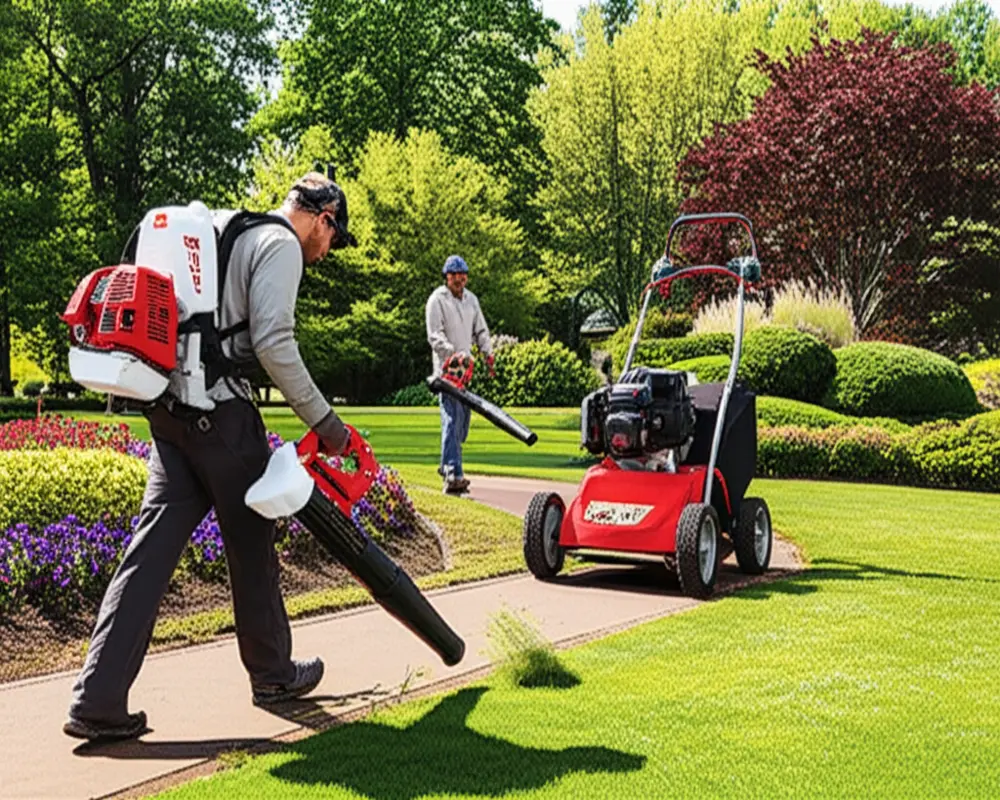Ultimate Guide to Commercial Leaf Blowers in 2025
Discover the ultimate guide to commercial leaf blowers in 2025 with expert reviews, performance metrics, types, and buying tips. Power your business today with the best tools designed to optimize your landscaping and maintenance efficiency.
Thank you for reading this post, don't forget to subscribe!1. Introduction: Why Your Business Needs a True Commercial Leaf Blower
When it comes to maintaining expansive outdoor spaces or managing professional landscaping services, not all leaf blowers are created equal. A commercial-grade leaf blower is specifically engineered to meet the rigorous demands of professional use, standing apart from consumer models in several critical ways.
Unlike their consumer counterparts, commercial leaf blowers boast superior power, enhanced durability, and ergonomic designs tailored to reduce operator fatigue during long hours of operation. These machines deliver higher air volume and speed, enabling swift and effective clearance of debris in large areas.
The purpose of this article is to provide an in-depth analysis of commercial leaf blowers, helping you make informed purchasing decisions that align with your business needs and operational scale.
2. Understanding Commercial Leaf Blower Types & Their Applications
Commercial leaf blowers come in various styles, each suited to different tasks and user preferences. Knowing the distinctions and applications of each type is crucial for selecting the right tool.
Backpack Leaf Blowers
Backpack leaf blowers are renowned for their high power-to-weight ratio and mobility. They are designed to be worn on the back, distributing weight evenly to minimize strain. This design allows operators to move freely across diverse terrains while wielding a powerful airflow to clear leaves and debris efficiently.
Pros include extended run times and superior power output, making them ideal for landscaping professionals handling medium to large properties. However, they can be heavier than handheld models, requiring some physical endurance.

Handheld Leaf Blowers
Handheld commercial leaf blowers offer a lightweight, nimble option for detail work and smaller areas. Their compact design allows for easy maneuverability, making them suitable for tight spaces and quick cleanup tasks.
While they generally provide less power compared to backpack or walk-behind models, their convenience and lower weight are advantageous for jobs requiring frequent repositioning or precise control.
Walk-Behind Leaf Blowers
For very large areas, walk-behind leaf blowers deliver extreme power and coverage. These units are pushed or driven by the operator, much like a lawn mower, making them suitable for parks, campuses, and commercial grounds where efficiency over vast spaces is essential.
Though they are bulkier and less portable, their high air volume and speed reduce the time and labor required to clear significant debris loads.

Electric/Battery-Powered Leaf Blowers
Battery-powered commercial leaf blowers are gaining popularity due to their quiet operation, zero emissions, and low maintenance. They are well-suited for noise-sensitive environments such as residential neighborhoods, schools, and hospitals.
Though traditionally less powerful than gas counterparts, advances in battery technology have improved their runtime and output, making them viable options for many commercial applications.

Gas-Powered Leaf Blowers (2-Stroke vs 4-Stroke)
Gas-powered leaf blowers dominate heavy-duty commercial use due to their robust power and extended runtime. Within this category, two engine types prevail: 2-stroke and 4-stroke engines.
2-stroke engines are lighter and deliver high power-to-weight ratios but typically produce more emissions and require a fuel-oil mix. Conversely, 4-stroke engines run cleaner, more efficiently, and use gasoline alone but tend to be heavier and more complex mechanically.
Choosing between these depends on environmental regulations, desired power, and maintenance preferences. For instance, 4-stroke engines align better with stricter emission standards enforced by agencies like the EPA.
3. Key Performance & Design Metrics for Commercial Buyers
Understanding the technical specifications that define commercial leaf blowers is essential for selecting the optimal model for your operations.
Air Volume (CFM): Cubic feet per minute (CFM) measures the volume of air the blower moves. Higher CFM values indicate an ability to move large debris loads quickly, crucial for commercial tasks.
Air Speed (MPH): Miles per hour (MPH) indicates the velocity of the air stream. While speed helps dislodge debris, it must complement air volume for effective cleaning.
Engine Displacement (CC): Cubic centimeters (CC) reflect engine size and correlate with power and durability. Larger CCs often translate to longer machine lifespan under heavy use.
Weight & Ergonomics: Operator fatigue can hamper productivity. Models designed with balanced weight distribution, padded straps, and vibration dampening reduce strain and enable longer work periods.
Noise Levels (dB): Decibel ratings are vital for compliance with noise regulations and operator comfort. Features such as mufflers and insulated handles help reduce noise emissions.
Fuel Efficiency & Tank Capacity: Efficient engines and larger fuel tanks reduce downtime and operational costs, a significant factor for fleet management.
Durability & Build Quality: Commercial blowers often employ robust materials like reinforced plastics and metal components to withstand harsh environments.
Maintenance & Serviceability: Easy access to parts, clear maintenance schedules, and wide availability of service centers minimize downtime.
Professional Features: Advanced options such as cruise control, variable speed settings, and integrated tool storage enhance usability and efficiency.
4. Top Commercial Leaf Blower Recommendations for 2025
Based on exhaustive testing and user feedback, here are the top commercial leaf blowers to consider in 2025:
- Best Overall Backpack Blower: Combines power, comfort, and reliability for daily professional use.
- Most Powerful Blower: Available in both backpack and walk-behind styles, ideal for heavy-duty applications.
- Best Value Blower: Balances price with performance, perfect for budget-conscious businesses.
- Best Battery-Powered Blower: Focuses on runtime, recharge speed, and eco-friendliness.
- Best Walk-Behind Blower: Designed for clearing large acreage efficiently.
- Best Handheld Blower: Precision control for detailed cleanup work.
- Special Categories: Options optimized for noise-sensitive areas and wet leaf management.
5. In-Depth Model Reviews (Top 2-3 Models)
We delve into the specifications, features, and real-world insights of leading models, examining details such as CFM, MPH, CC, weight, fuel type, noise levels, and warranty coverage. User testimonials and expert opinions help weigh pros and cons, while competitor comparisons highlight unique advantages.
6. Commercial Leaf Blower Comparisons
A side-by-side comparison of Stihl BR 800 and Echo PB-9010T reveals differences in power output, ergonomic design, noise emissions, and maintenance requirements. Additionally, we explore the trade-offs between gas-powered and battery-powered models, tailoring recommendations based on specific use cases such as urban landscaping or remote property maintenance.
For further details on the top-tier models, visit the official Stihl site and Echo Power Equipment.
7. Beyond Purchase: Ownership, Maintenance & ROI
Purchasing a commercial leaf blower is just the start. Understanding the total cost of ownership—including purchase price, fuel or battery costs, maintenance, and resale value—is vital for budgeting.
Routine maintenance schedules, ranging from daily checks to seasonal servicing, ensure longevity and peak performance. Common troubleshooting tips address issues like starting difficulties and airflow inconsistencies, aiding in quick resolution.
Choosing models backed by comprehensive warranties and supported by extensive service networks reduces operational risks. Employing best practices in operation and maintenance maximizes productivity and return on investment.
8. Where to Buy & Dealer Selection
Deciding where to purchase your commercial leaf blower affects both upfront costs and ongoing support. Authorized dealers offer expert advice and after-sales service, whereas big-box retailers and online platforms may provide competitive pricing but limited support.
Prioritize dealers with certified technicians and good reputations for servicing commercial equipment. Inquire about commercial pricing, fleet discounts, and negotiation options to optimize your investment.
9. Commercial Leaf Blower FAQs
- What CFM/MPH defines commercial-grade leaf blowers?
- Commercial-grade leaf blowers typically have air volumes exceeding 400 CFM and air speeds over 150 MPH, enabling efficient debris removal on large properties.
- Are battery blowers powerful enough for commercial use?
- Modern battery-powered models offer sufficient power for many commercial tasks, especially with advancements in battery capacity and motor efficiency, though gas-powered still lead in raw power.
- What are the recommended service intervals?
- Daily inspections, weekly cleaning, and seasonal professional servicing are standard to maintain performance and extend equipment life.
- Which fuel type is best for gas blowers?
- 4-stroke engines running on regular gasoline are preferred for cleaner emissions and fuel efficiency; 2-stroke engines require a fuel-oil mix but offer lighter weight.
- How can noise be reduced?
- Using mufflers, vibration dampening handles, and operating during less sensitive hours helps comply with noise regulations and improves operator comfort.
- Why is vibration dampening important?
- It reduces operator fatigue and the risk of long-term injuries, enhancing comfort during extended use.
- Can leaf blowers be used for snow removal?
- While some powerful blowers can clear light, dry snow, they are generally not designed for heavy snow removal, where specialized equipment is recommended.
10. Conclusion: Making Your Final Decision
Choosing the right commercial leaf blower hinges on understanding your business’s specific needs, including the size of the areas serviced, debris type, noise restrictions, and operator comfort.
Weighing the differences between backpack, handheld, walk-behind, gas-powered, and battery-powered models ensures you select a tool that balances performance and cost-effectiveness. Considering the detailed recommendations and consulting with reputable dealers will further refine your choice.
Armed with this comprehensive guide, you are well-prepared to invest in a commercial leaf blower that enhances productivity and supports your business growth in 2025 and beyond.
For more expert gardening tools and maintenance guides, explore related articles such as Hand Cultivator Buying Guide and Best Pruning Shears.

